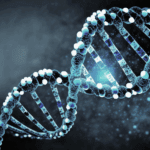A centuries-old remedy from the heights of the Himalayas is now at the center of a modern medical breakthrough, as scientists have reimagined a natural compound to supercharge its effectiveness against cancer.
A Curious Fungus and Its Storied Past
High in the Himalayan mountains, a peculiar fungus has long been prized in traditional medicine. Known as Ophiocordyceps sinensis -or more colloquially, the “caterpillar fungus”-this organism has been used for generations in herbal remedies. Its reputation as a healing agent is legendary, but only recently have researchers managed to unlock its full therapeutic potential in the realm of cancer treatment.
Cordycepin: The Molecule with Promise and Problems
At the heart of this fungus lies cordycepin, a naturally occurring molecule also referred to as 3′-deoxyadenosine. Cordycepin is a nucleoside analogue, meaning it closely resembles the building blocks of DNA and RNA. In laboratory settings, cordycepin has demonstrated a range of beneficial effects-anti-inflammatory, antioxidant, and most notably, anti-cancer properties.
Yet, for all its promise, cordycepin faces a formidable obstacle: the human body itself. When cordycepin enters the bloodstream, it’s swiftly dismantled by an enzyme called adenosine deaminase (ADA), leaving only a fleeting chance for the molecule to reach and affect cancerous cells. Its half-life in plasma is just 1.6 minutes, making it a sprinter in a marathon. Additionally, cordycepin struggles to enter cells efficiently, relying on specific transporters that aren’t always available in abundance.
Read more: Here Are The Cat Breeds With The Longest Lifespans, According to Experts
Engineering a Solution: Enter NUC-7738
Determined to overcome these limitations, a team from the University of Oxford joined forces with the biopharmaceutical company NuCana. Their mission: to reengineer cordycepin so it could survive longer in the body and infiltrate cancer cells with greater ease.
The result of this collaboration is NUC-7738, a new chemotherapy candidate that leverages the core structure of cordycepin but with several key modifications. Unlike its natural counterpart, NUC-7738 doesn’t rely on the usual transporters to enter cells. It’s been chemically tweaked to slip through cellular barriers independently, sidestepping the need for the Human Equilibrative Nucleoside Transporter 1 (hENT1).
Moreover, NUC-7738 is “pre-activated,” meaning it doesn’t require conversion by the enzyme adenosine kinase, a step that natural cordycepin cannot skip. The molecule is also armored against ADA, making it far more stable in the bloodstream.
The Science Behind the Boost
To achieve these feats, researchers employed a technology known as ProTide. This approach involves attaching small chemical groups to cordycepin, which not only shields it from rapid breakdown but also enables it to breach cellular defenses without external assistance. Once inside the cell, these chemical groups are cleaved off, releasing the active drug exactly where it’s needed most.
ProTide technology isn’t entirely new-it’s been used successfully in antiviral medications like remdesivir and sofosbuvir-but its application here marks a significant advance in cancer therapeutics.
Read more: The Incredible Case Of The Only Known Individual With Parents From Two Different Species
Up to 40 Times More Potent: Laboratory Triumphs
The enhancements are not just theoretical. When tested against a variety of human cancer cell lines, NUC-7738 displayed anti-cancer activity up to 40 times greater than unmodified cordycepin. This dramatic increase in potency is attributed to the drug’s improved stability and ability to reach its target inside tumor cells.
From Bench to Bedside: Early Clinical Results
NUC-7738’s journey from the laboratory to the clinic began with a Phase 1 trial, which started in 2019. This initial study involved 28 individuals with advanced cancers that had not responded to traditional therapies. Participants received weekly escalating doses of NUC-7738.
So far, the results are promising. The drug has been well tolerated, with participants experiencing manageable side effects. More importantly, researchers have observed encouraging signs of anti-tumor activity and prolonged stabilization of disease in some patients.
“These findings provide proof of concept that NUC-7738 overcomes the cancer resistance mechanisms that limit the activity of 3′-deoxyadenosine and support the further clinical evaluation of NUC-7738 as a novel cancer treatment,” the research team noted.
What Sets NUC-7738 Apart?
Let’s break down the key differences between natural cordycepin and its synthetic cousin, NUC-7738:
| Feature | Cordycepin (Natural) | NUC-7738 (Engineered) |
|---|---|---|
| Source | Himalayan fungus | Lab-synthesized derivative |
| Stability in Bloodstream | Rapidly broken down by ADA | Resistant to ADA |
| Cell Entry | Needs hENT1 transporter | Enters cells independently |
| Activation | Requires adenosine kinase | Pre-activated |
| Potency Against Cancer | Limited | Up to 40x higher |
| Clinical Use | Traditional medicine | Experimental chemotherapy |
A Glimpse into the Future
While the data so far are encouraging, NUC-7738 remains in the early stages of clinical development. The current Phase 1 trial is ongoing, and plans are underway for a larger Phase 2 study, which will further test the drug’s safety and effectiveness in a broader group of patients.
If future trials confirm the early promise, NUC-7738 could represent a new class of chemotherapy, one that harnesses the wisdom of traditional medicine and the precision of modern science.
Related video:Having A Cat Is Linked To A Lower Risk Of Having Heart Attacks
The Broader Implications
The story of NUC-7738 is more than just a tale of scientific ingenuity. It highlights the potential of natural products-long used in folk remedies-as starting points for advanced therapies. By identifying the limitations of these compounds and using modern chemistry to address them, researchers can create new drugs that are both effective and safe.
This approach also underscores the value of collaboration between academic institutions and industry partners. The partnership between Oxford and NuCana has brought together expertise from different fields, accelerating the path from discovery to patient care.
A New Chapter in Cancer Therapy
Cancer remains one of the most formidable challenges in medicine. Traditional chemotherapy, while often effective, can be limited by resistance and side effects. The development of NUC-7738 shows that it’s possible to reimagine old remedies for the modern era, potentially offering new hope to those who have exhausted other options.
What’s Next?
- Phase 2 trials: These will involve more participants and help determine the optimal dosing and further assess the drug’s effectiveness.
- Broader applications: If successful, NUC-7738 might be tested against a wider range of cancers, especially those resistant to current treatments.
- Refinement: Ongoing research may lead to even more advanced versions of the drug, or inspire similar strategies for other natural compounds.
Final Thoughts
The transformation of a humble Himalayan fungus into a cutting-edge cancer therapy is a testament to the ingenuity of modern science. By blending tradition with technology, researchers have opened a new avenue in the quest to conquer cancer-a journey that is just beginning, but already filled with promise.
As the trials progress, the world will be watching to see whether this ancient remedy, reimagined for the 21st century, can deliver on its remarkable potential.










